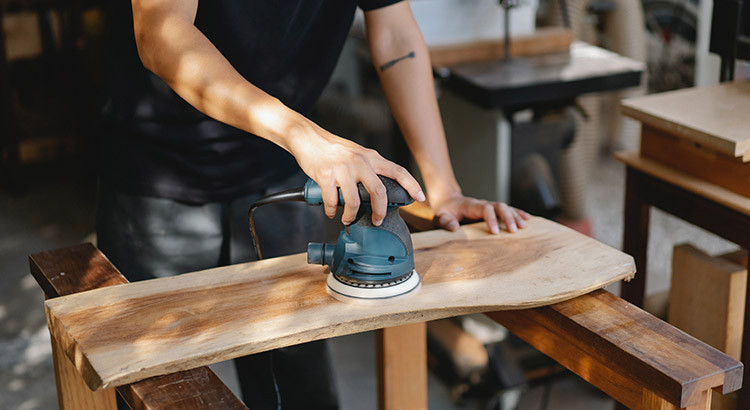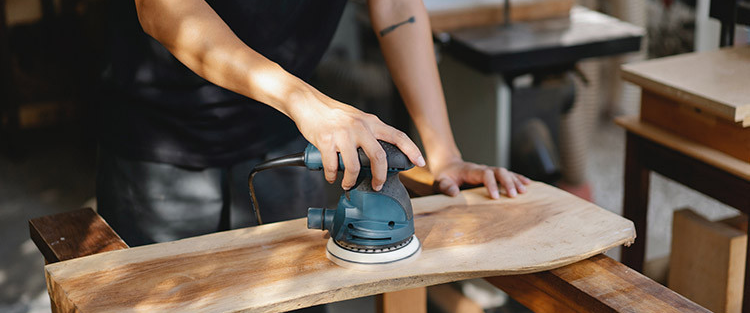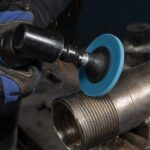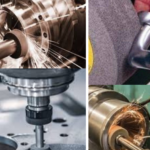
Woodworking requires a blend of accuracy, expertise, and the appropriate tools. Among the essential tools in any woodworker’s arsenal are abrasives. Whether you’re sanding down rough edges, smoothing surfaces, or preparing wood for finishing, choosing the right abrasive is crucial to achieving the best results. In this blog, we will explore the different types of abrasives available for woodworking, how to select the best one for your needs, and tips for using them effectively. By the end of this guide, you’ll be well-equipped to make informed decisions on woodworking abrasives, ensuring that your projects are not only beautiful but also long-lasting.
Understanding Woodworking Abrasives
Abrasives are materials used to wear away or smooth the surface of wood by rubbing or grinding. They come in various forms, such as sandpaper, sanding discs, belts, and pads, and are available in different grit sizes and materials. The right abrasive can make a significant difference in the quality of your work, affecting everything from the smoothness of the finish to the time it takes to complete a project.
Types of Abrasives for Woodworking
Selecting the right type of abrasive is the first step in ensuring a successful woodworking project. Here are the most common types of abrasives used in woodworking:
1. Aluminum Oxide
Aluminum oxide is one of the most popular abrasives for woodworking. Known for its durability and versatility, it’s suitable for both hand sanding and power sanding. Aluminum oxide abrasives are typically available in sandpaper, sanding discs, and belts. They are ideal for wood surfaces as they cut efficiently and have a long lifespan. This abrasive is particularly effective on hardwoods like oak, maple, and walnut.
2. Garnet
Garnet is a natural abrasive that has been used in woodworking for centuries. It’s softer than aluminum oxide but provides a smoother finish, making it ideal for fine sanding and finishing work. Garnet abrasives are commonly used in sandpaper form and are well-suited for hand sanding. They are especially effective on softwoods like pine and cedar, where a gentle touch is required to avoid over-sanding.
3. Silicon Carbide
Silicon carbide is a sharp, synthetic abrasive that is harder and more brittle than aluminum oxide. It’s excellent for sanding finishes between coats or removing old finishes from wood. Silicon carbide abrasives are often used in wet sanding applications, as they are waterproof and can withstand moisture without losing their effectiveness. They are particularly useful for sanding down finishes on furniture and cabinetry.
4. Ceramic
Ceramic abrasives are known for their exceptional cutting power and durability. They are often used in industrial woodworking applications where high pressure and heavy-duty sanding are required. Ceramic abrasives are typically more expensive than other options, but they last longer and maintain their cutting efficiency over time. They are best suited for aggressive sanding tasks on hardwoods and removing large amounts of material quickly.
5. Zirconia Alumina
Zirconia alumina is a synthetic abrasive that is highly durable and self-sharpening. It’s commonly used in power sanding applications, such as in sanding belts and discs. Zirconia alumina is particularly effective on hardwoods and can handle tough sanding jobs with ease. It’s a great choice for woodworkers who need a long-lasting abrasive for heavy-duty work.
How to Choose the Right Abrasive for Woodworking
Choosing the right abrasive involves considering several factors, including the type of wood, the stage of the project, and the desired finish. Follow this detailed guide to make an informed decision:
1. Identify the Wood Type
The type of wood you’re working with plays a crucial role in selecting the right abrasive. Hardwoods like oak, maple, and cherry require more aggressive abrasives, such as aluminum oxide or ceramic, to achieve a smooth finish. Softwoods like pine and spruce are better suited to gentler abrasives like garnet, which prevent over-sanding and damage to the wood.
2. Determine the Stage of the Project
The stage of your woodworking project will also influence your abrasive choice. For initial rough sanding, a coarse grit (40-60) is ideal for removing large imperfections and shaping the wood. For intermediate sanding, a medium grit (80-120) helps to smooth the surface and prepare it for finishing. For final sanding and finishing, a fine grit (150-220) is used to achieve a smooth, polished surface.
3. Consider the Desired Finish
The final finish you want to achieve will determine the grit and type of abrasive you need. If you’re looking for a glass-like finish, you’ll need to progress through multiple grits, starting with a coarse grit and gradually moving to a fine grit. For a more rustic or natural finish, you may choose to stop at a medium grit, which will leave some texture on the wood surface.
4. Choose the Right Form Factor
Abrasives come in various forms, including sheets, discs, belts, and pads. The form factor you choose will depend on the tools you’re using and the area of the wood you’re working on. For large, flat surfaces, sanding discs or belts attached to power sanders are efficient. For detailed work or tight corners, hand sanding with sheets or pads is more effective.
5. Evaluate Durability and Cost
While it might be tempting to choose the cheapest option, investing in high-quality abrasives can save you time and money in the long run. Durable abrasives like ceramic or zirconia alumina last longer and maintain their cutting power, reducing the need for frequent replacements. Consider the cost per use rather than the upfront cost when selecting your abrasives.
Tips for Using Woodworking Abrasives Effectively
Choosing the right abrasive is only half the battle; knowing how to use them effectively is equally important. Here are some tips to help you get the most out of your woodworking abrasives:
1. Use the Right Grit Progression
Always start with a coarse grit to remove large imperfections and gradually move to finer grits to smooth and polish the surface. Skipping grits can lead to uneven sanding and visible scratches, which will require additional sanding to fix.
2. Keep the Abrasive Clean
Dust and debris can clog the abrasive, reducing its effectiveness and causing it to wear out faster. Clean your abrasives regularly by tapping them against a hard surface or using a specialized abrasive cleaning stick. For power sanders, consider using a vacuum attachment to remove dust as you sand.
3. Apply Even Pressure
Whether you’re hand sanding or using a power sander, apply even pressure across the surface to avoid creating dips or grooves in the wood. Let the abrasive do the work—pushing too hard can cause the abrasive to wear out quickly and may damage the wood.
4. Sand with the Grain
Always sand in the direction of the wood grain to avoid creating cross-grain scratches, which are difficult to remove. Sanding against the grain can also cause the wood fibers to tear, leading to a rough, uneven surface.
5. Replace Abrasives When Worn
Using a worn-out abrasive can lead to poor sanding results and increased effort. Replace your abrasives as soon as you notice they are no longer cutting efficiently. Dull abrasives can cause more harm than good, leaving you with more work to do.
The Role of M/s Sandpaper Rodiez in Providing High-Quality Woodworking Abrasives
At M/s Sandpaper Rodiez, we understand the importance of quality abrasives in woodworking. We are committed to providing our clients with the best abrasives tailored to their specific needs. Our range of woodworking abrasives is designed to deliver superior performance, ensuring that your projects turn out beautifully every time.
1. Customized Abrasive Solutions
We offer customized abrasive solutions that meet the unique requirements of your woodworking projects. Whether you need abrasives for hardwoods, softwoods, or specialized finishing tasks, we can provide products that match your needs perfectly.
2. High-Quality Materials
We import the best quality sandpaper and abrasives from trusted suppliers around the world. Our products are made from durable materials like aluminum oxide, garnet, and ceramic, ensuring long-lasting performance and exceptional results.
3. Expert Advice and Support
Our team of experts is always available to help you choose the right abrasives for your woodworking projects. We can guide you through the selection process, recommend the best products for your needs, and provide tips on how to use them effectively.
Conclusion
Choosing the right abrasives for woodworking is essential for achieving professional-quality results. By understanding the different types of abrasives available, considering factors like wood type, project stage, and desired finish, and using abrasives effectively, you can ensure that your woodworking projects are smooth, polished, and ready for finishing.
At M/s Sandpaper Rodiez, we are dedicated to helping you achieve your woodworking goals with our high-quality, customized abrasives. Visit our website Sandpaper Rodiez to learn more about our products and how we can support your woodworking needs.
By selecting the best abrasives for your projects, you can elevate your craftsmanship, reduce your workload, and produce stunning pieces that stand the test of time. Let us be your partner in woodworking excellence.



